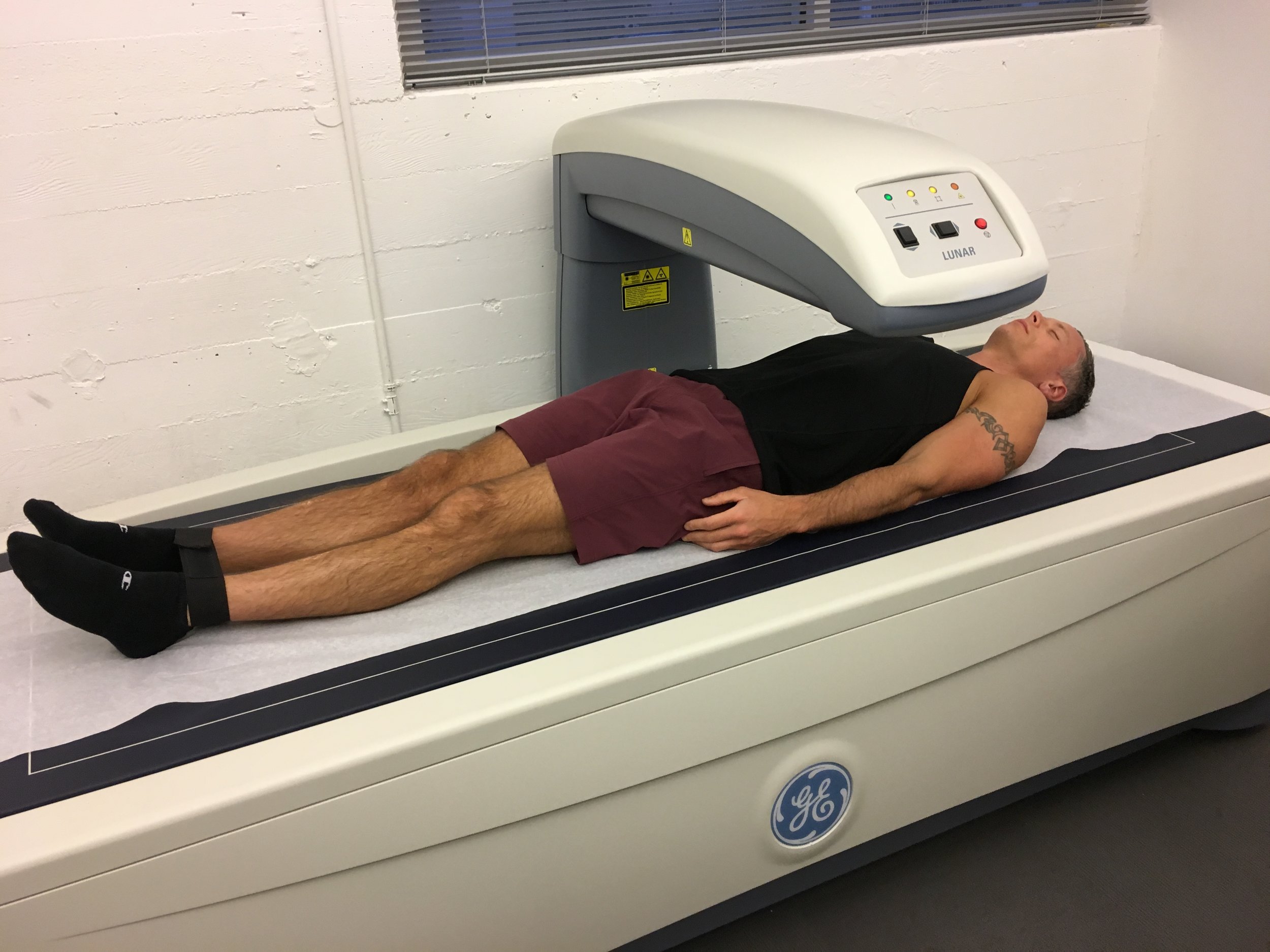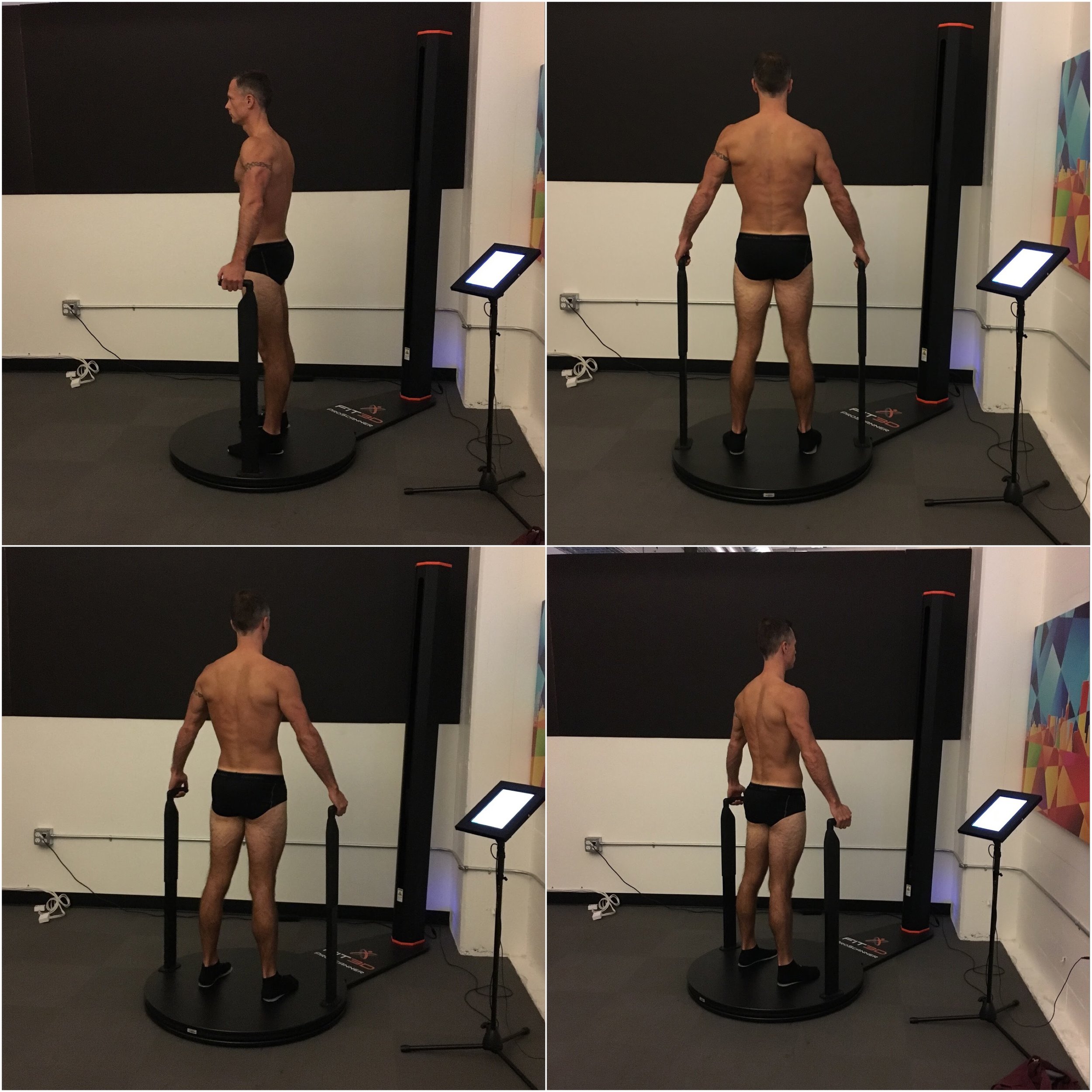What We Can Learn from Metabolic Testing
/I'm a big fan of knowing what's going on with my body. And if there are simple, affordable tests I can take that can give me useful, actionable data to improve my health and inform my fitness program I'm all for it. So I recently engaged a local office of DexaFit to obtain a Dexa Scan Body Composition Analysis, RMR (Resting Metabolic Rate) Test, V02 Max Test and Fit3D Posture Scan. Below I've outlined what I learned from these tests and how I am applying that knowledge to optimize my fitness program. I've also included links to my full reports and photos from my experience to help you decide if similar testing makes sense for you. If DexaFIt doesn’t have a location near you, visit DexaScan.com to find a qualified provider.
Many of my personal training and nutrition clients have chosen to have the same tests done and it's extremely helpful for me as their trainer to use the information to make their programs even more effective and to give us additional metrics to measure success. Watch the video below to hear my client Erica discuss how these tests were pivotal in her losing over 30 pounds of fat, gaining stability and strength and turning her body into a fat burning machine. Note, my clients receive special pricing at DexaFit. Simply schedule online and when you go in give the code "JJ24" to your technician and the discount will be applied before you are charged. You will need to fast for 12 hours for these so best to schedule an early morning appointment.
Dexa Scan Body Composition Analysis
DEXA means dual-energy absorptiometry. It is the gold standard for measuring body composition and bone health. A DexaFit DEXA (DXA) scan is a simple and easy 10-minute test that measures your total body fat and includes the exact breakdown of bone mass, fat tissue and muscle in your body. It's hospital grade equipment and is far more accurate than the common body composition scales increasingly found in gyms and doctors offices (including the InBody Body Composition Analyzer I use). Click here (PDF) for my full Dexa Scan results to get a sense of all the data it provides.
What the report tells me:
Subcutaneous body fat in pounds and percentage and lean muscle mass in pounds broken down in detail across left and right limbs, trunk, android (waist/abdomen) and gyroid (hips). My report highlights the notable difference in muscle mass between my right and left legs (1.2#). So I need to continue to prioritize single leg exercises like lunges, step ups, step downs and single leg deadlifts to help my left leg catch up with my right. This all traces back to lack of dorsiflexion in my left ankle so in terms of correctives I need to continue following my PT's instructions.
Visceral adipose tissue, particularly in the android, which is known to be a marker for health risks. In my example I have 0.8# of total android fat. A "safe" amount of visceral fat in this area would be 50% of that (or 0.4#). Mine came back at 0.29#. Fhew!
One of the coolest things about the Dexa is that is also measures bone density and for those of us not getting any younger or at risk for osteoporosis this can be an important thing to monitor. I learned a lot about bone density from my DexaFit technician. Our bones are most dense at the age of 30. As we age, we want to monitor standard deviations from this point. Anything between -2.5 to -1.5 standard deviations is cause for concern. Mine came back at +2.0 which is awesome. This tells me that years of weight training has helped strengthen my bones and that a healthy diet and vitamin D supplementation has paid off. Fhew again!
RMR (Resting Metabolic Rate) Test
Your RMR is the number of calories needed to perform your body's most basic (basal) functions, like breathing, circulation and cell production. In essence the test measures the speed of your metabolism to help determine your nutritional needs based on your estimated activity levels. As a nutrition coach who helps clients determine and track their ideal macros, this is extremely helpful information that adds a layer of specificity to my recommendations.
This test also measures respiratory exchange ratio (RER) which is the ratio between the amount of carbon dioxide (CO2) produced in metabolism and oxygen (O2) used. Measuring this ratio can be used for estimating the respiratory quotient (RQ), an indicator of which fuel (carbohydrate or fat) is being metabolized to supply the body with energy. Most of us want to burn body fat. So if we are over favoring carbohydrates for fuel we need to make some changes to our cardio program to retrain our bodies to burn more fat and we also need to look at our stress, sleep and overall regeneration strategy. A solid breakdown would be 70% fat and 30% carbohydrate/sugar. As you can see from mine, I need to try some new regeneration strategies to assist with my current insomnia. I'm on it!
What to expect: this is a fairly pleasant test. The tech will hook you up to a gas exchange mask (see photo below) and you will relax comfortably in a recliner for about 20 minutes. Bring a jacket because the facility is chilly. But basically you get to nap for 20 minutes. Sweet!
V02 Max Test
DexaFit's Vo2max testing pinpoints your precise cardio fitness levels, shows you how to exercise more effectively and what to do to personalize planning and boost sluggish metabolisms. I won't lie, it's a tough test. Wearing the same gas exchange mask from your RMR you will run on a treadmill, slowly building up the intensity (incline and speed) until you hit your maximum (i.e. you simply can't run any harder/longer and you have to stop). It can take anywhere from a few minutes (for the de-conditioned) to 10-15 minutes for the conditioned. The results give you a measure of your overall cardio fitness (mine was "excellent" WOOT WOOT!).
But more importantly it gives you precise target heart rate zones to train in based on your goals (body fat loss, improved endurance, max speed, etc). So for my example, from what I learned above in my RMR I want to train my body to use more body fat as fuel so I need to frame my cardio workouts to keep me between 94-110 BPM. This is easy to do with a basic bluetooth heart rate monitor and it's already yielding me excellent results.
Fit3D Posture Scan
This test uses a laser-guided Fit3D ProScanner to provide a full 3D image of your body in 40 seconds. The results are broken down in detailed measurements including circumferences, lengths, widths and volumes. Paired with the results of the Dexa Scan it can add another layer of specificity to any imbalances that need to be addressed through corrective exercises, soft tissue work or strength training. It also provides a helpful visual representation of your static posture including shifts, tilts and rotations in your body that may need addressing.
The test is most accurate if your wear as little as possible. So be prepared to be chilly in your skivvies for the 40 seconds it takes to go around on the nifty scanner. You will enter some info into their computer, step on the scanner and stand still as the pedestal rotates 360 degrees. Guys, it's suggested you go shirtless and in your underwear. Ladies should wear a sports bra and underwear.
What my results confirm is that I need to continue working on my shoulder and ankle imbalances. My left shoulder is noticeably elevated so I need to continue my soft tissue work on my upper trap and to strength the muscles that depress the shoulder (mid/lower traps) and that stabilize the scapula (like my serratus anterior). I need to continue work on adding mobility to my left ankle so that I don't rely more heavily on my right ankle and stop shifting more of my weight to the right. #progressnotperfection










